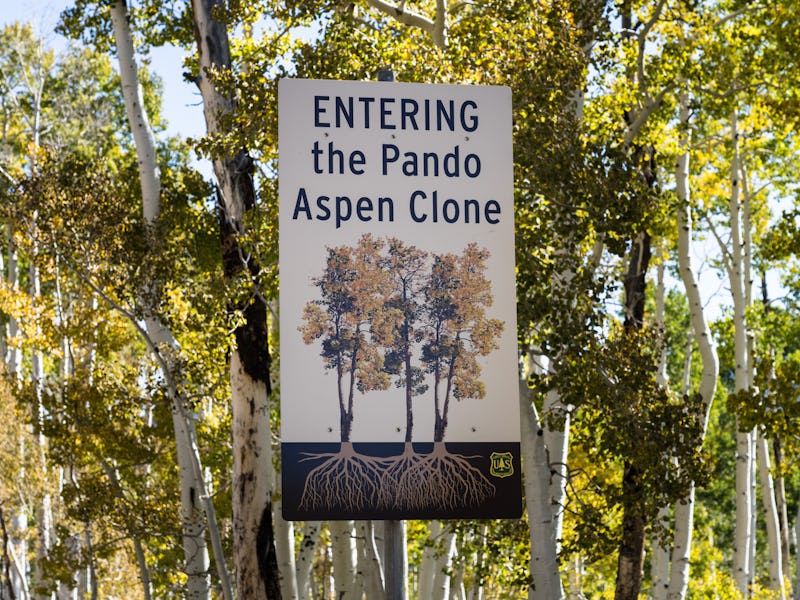Incredible! Listen to the Noisy Soundscape Beneath the World's Largest Tree
Tune in to the sounds of Pando, from under the soil.

Standing in the Pando aspen grove puts you in the belly of a 13-million-pound beast. While it may look like an ordinary forest, each tree is actually a branch attached to one of the oldest and largest organisms known on Earth.
Pando is a famous clone, and all the branches you see on the surface originated from a single seed. The tree has asexually reproduced for tens of thousands of years, and today boasts 40,000 identical branches that share a heavy, dense root system underneath 106 acres of land.
The Pando Aspen Grove
But in recent years, the grove has begun to change. Aerial footage, images, and surveys have shown that Pando is shrinking over time due to a variety of factors. Looking at the grove is one way to track its changes, but listening to its sounds can also provide vital information about Pando and the ecosystem it supports.
Sound engineer Jeff Rice created an audio portrait of Pando that was presented this week at the annual Acoustical Society of America conference. The audio, collected above and below ground, sheds fresh light on Pando’s interconnectedness.
“It tells you so many different things about the environment,” Rice, the director and co-founder of the Acoustic Atlas project at the Montana State University Library, said at a press conference. “It tells you about the species that are there, it tells you about the health of the environment, and it's a document of the environment as things change due to climate change and habitat loss.”
For the project, Rice teamed up with Friends of Pando executive director Lance Oditt to find ideal recording locations in the grove. Above ground, they used microphones to document birdsong, fluttering leaves, and scuttling ants.
But under the soil, the roots of Pando presented an equally fascinating soundscape. Underground sounds were captured with a hydrophone, which is designed to listen to faint noises underwater or, as in this case, underground.
During a storm, the hydrophone was placed near Pando’s roots, and detected vibrations passing through the soil (listen here). Rice thinks that these sounds could be the culmination of millions of leaves trembling in the wind, sending vibrations down to the roots.
The hydrophone even picked up on an unidentified critter moving inside a tree cavity, which could be heard from the roots (listen here). Since these types of underground recordings have never been captured in Pando before, the sources of all sounds were not easy to identify.
“We know that we were in contact with the root system, and we know that the tree vibrates,” Rice said at the press conference. “But it's hard to say what that means; whether it's a combination of the sounds of the Earth vibrating, or the specific roots, but it's certainly interesting.”
While at Pando, Rice and Oditt tested the idea that tapping a root in one spot of the grove could produce a sound in another. Sure enough, like a game of telephone, the vibration passed 90 feet through the root system to produce a sound that the hydrophone could pick up.
Though Rice is not a scientist, he noted that he wanted to share his work at the ASA conference in the hopes that scientists might take interest in the sounds of Pando.
“It was interesting from an artist's perspective, and from a bioacoustic perspective, sound is also a baseline from which to gauge environmental change,” Rice said.
In a press release, Oditt said that Friends of Pando will use the data for future studies on the clone’s root depth, insect colonies, and water movement.
“The findings are tantalizing,” Oditt said. “While it started as art, we see enormous potential for use in science. Wind, converted to vibration (sound) and traveling the root system, could also reveal the inner workings of Pando’s vast hidden hydraulic system in a non-destructive manner.”
This article was originally published on